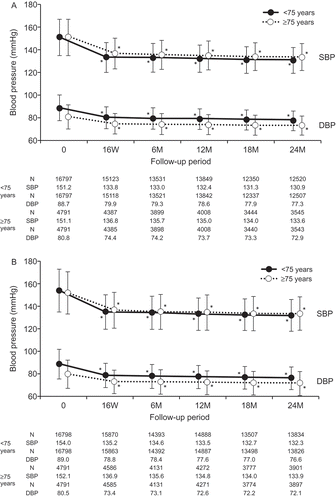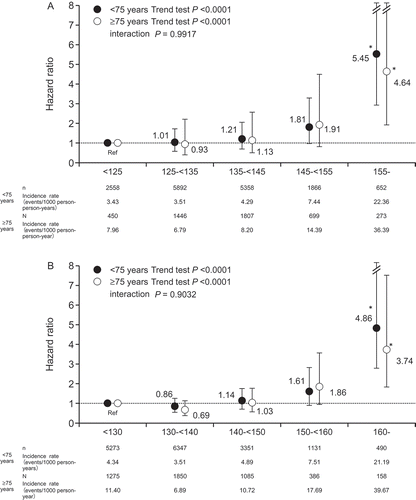Figures & data
Table 1. Baseline characteristics of the study patients.
Figure 1. Changes in morning home blood pressure (A) and clinic blood pressure (B) in patients aged <75 years and ≥75 years. *P< 0.05 (vs baseline, Dunnett-Hsu test). DBP, diastolic blood pressure; SBP, systolic blood pressure; W, weeks; M, months.

Table 2. Cardiovascular events during follow-up period.
Figure 2. Relationship between the major cardiovascular event and morning home systolic blood pressure (A; reference, <125 mmHg) or clinic systolic blood pressure (B; reference, <130 mmHg) during follow-up period in patients aged <75 years and ≥75 years. The Cox proportional hazards model was used, adjusting for sex, family history of cardiovascular disease, dyslipidemia, diabetes mellitus, chronic kidney disease, history of cardiovascular disease, and smoking status. *P< 0.05 (vs reference). HR: hazard ratio; CI: confidence interval.

Table 3. Adverse drug reactions associated with excessive blood pressure lowering by age (reported by doctors in charge).
